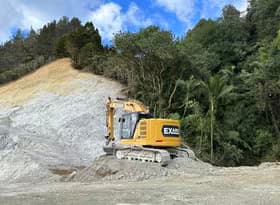
Confidence surveys signal the cusp of a residential downturn
There’s a growing sense of unease about prospects in the construction industry as the housing market continues to be pummelled by higher mortgage rates. Although indicators of current demand remain reasonably solid, the strong growth in demand for materials that had typified the second half of 2020 and 2021 is no longer present. People across the industry are now starting to consider how sharp and how soon the downturn in activity might be, with the residential sector looking particularly vulnerable given activity has been at record highs.
Architects could be the canary in the coalmine
This week’s October 2022 Quarterly Survey of Business Opinion (QSBO) from NZIER showed a net 44% of architects expect less residential architectural work to be available over the coming year. Chart 1 shows that this result was a sharp drop from the 12% expecting a deterioration in the previous survey (published in July) and, excluding the June 2020 lockdown, was the weakest result since 2009.
Architects’ expectations have historically provided a good indicator of changes in consents about six months ahead of time. With architects seeing less work coming through their doors, the survey response points to the annual consent total retreating from over 50,000 towards about 44,000 by March 2023 and dipping below 40,000pa by this time next year.
Architects are also feeling pessimistic about prospects for private sector commercial work over the coming year, with a net 29% expecting less work to be available. Although this figure is also the lowest result since 2010 (excluding lockdown), it tends to be a less reliable indicator of future activity. At face value, it suggests that private sector non-residential consents will be contracting modestly by early 2024. However, there is a risk that any downturn in non-residential activity could be greater than architects’ current assessment of their future workflows.
Although architects are expecting a slowdown in work, this pessimism is not showing through in responses from builders yet. A net 13% of builders responding to the QSBO experienced increased output over the last three months, above the long-term average of about 4%. Responses to this question typically lead changes in total work put in place (residential and non-residential) by about six months.
The discrepancy between responses from architects and builders reflects three factors. The questions being asked relate to different time periods, with architects being asked to look forward over the next year and builders being asked to look back over the last three months.1 Responses from builders also relate to all construction activity, not just residential work, which is looking more vulnerable than non-residential activity at the moment. But the differences also reflect the different stages occupied by architects and builders in the design and construction process. Responses from builders suggest that the pipeline of work waiting to be done remains good, while responses from architects suggest that the new work feeding into that pipeline is starting to dry up.
ANZ’s measure falls further and further
ANZ’s Business Outlook ratifies the weakening outlook for residential activity. A net 72% of respondents to the latest survey (seasonally adjusted, for September 2022) expect residential construction activity to decline over the coming year. Chart 3 shows that the previous record low (excluding lockdown) was 42% expecting a decline in March 2008. By March 2009, the annual consent total had plunged 34% from a year earlier. A similar decline over the next year would see residential consents down in the 33,000-34,000pa range – a result that seems unlikely at this stage given the persistent strength in residential consent numbers so far during 2022!
The Business Outlook also confirms that prospects for non-residential construction are more stable. Responses about non-residential construction tend to be more volatile, but the average response over the last three months shows a net 12% of people expecting activity to increase, in line with the long-term average. This result is consistent with a small increase of 3-4% of non-residential work put in place over the coming year.
Code compliance data could signal more project cancellations
Data from Auckland Council shows that a 14% gap has opened up in the city between the number of residential consents issued two years ago and the latest code compliance certificate (CCC) figures (see Chart 4). The gap has only been wider on two previous occasions: in May 2019, when falling house prices will have stopped some projects from progressing; and in July 2020, when lockdown will have led to delays in both construction and CCC issuance.
We are cautious about reading too much into the latest divergence given that COVID-19 and other supply chain disruptions will have extended project timelines and led to CCCs taking longer to be issued. However, we note that Auckland’s annual consent total two years ago was under 15,000, compared with almost 21,500 in the year to August 2022. This increase indicates we should see a lot more new dwellings being completed between now and 2024. Any failure of the CCC trend to follow consent numbers higher over the next two years would be a clear indication that an increased proportion of projects are being cancelled as the housing market has slumped.
House price and building cost equation is a horror story
One of our favoured metrics in assessing prospects for residential construction is the ratio of house price inflation to building cost inflation, or Tobin’s Q. Chart 5 shows that this ratio has deteriorated substantially, as house prices have fallen and construction costs have soared. This combination is a recipe for a reduction in house building as it becomes more expensive to build a house that will ultimately be sold for less.
At its most simple, this trend points towards bigger declines in residential consent numbers over the coming year. The data in Chart 5 is up to June 2022, and Tobin’s Q is already nearly as negative as it was in 2008/09 as the Global Financial Crisis struck, when the annual residential consent total fell by as much as 39%. With house prices still recording significantly monthly falls, and indicators of costs remaining elevated, the Tobin’s Q ratio is likely to become even more negative in the short-term, easily surpassing how bad the market drivers got during the GFC. We’re not forecasting 40%pa declines in consent numbers, but the risks for residential construction are currently clearly all pointing in a downward direction.
Some of the industry’s challenges have become less critical
Finally, in the interests of balance, its worthwhile noting a couple of numbers in the latest QSBO that showed a sliver of good news for the construction industry. Firstly, responses about overdue debtors retreated from the very high levels seen in the June quarter. Experiences of bad debts in the last three months, and expectations for the next three months, both remain above their long-term averages, but are now at much less alarming levels.
Secondly, supply chain issues also look they have eased a bit. Stocks of raw materials are less critical and are expected to improve further over the next three months. And although 15% of builders still see supplies as the biggest factor constraining their growth, this figure is now at its lowest in 15 months.
If residential construction activity is about to enter a downturn, it’s preferable if firms don’t need to grapple with additional challenges such as disrupted supply chains and project delays making trading conditions even tougher than they will be anyway.
1 There are a range of different questions asked of architects and builders. We have chosen to focus on the questions that have the best correlations with either consents or work put in place.













